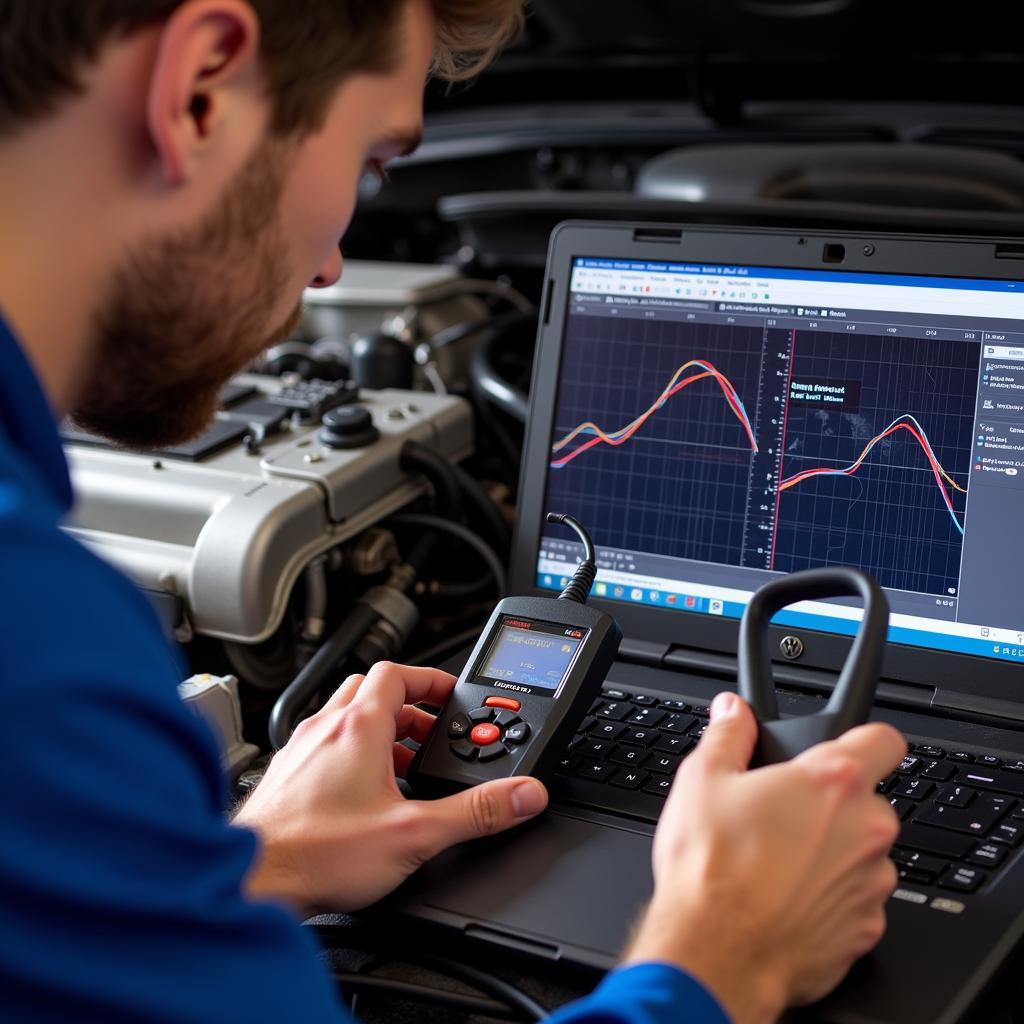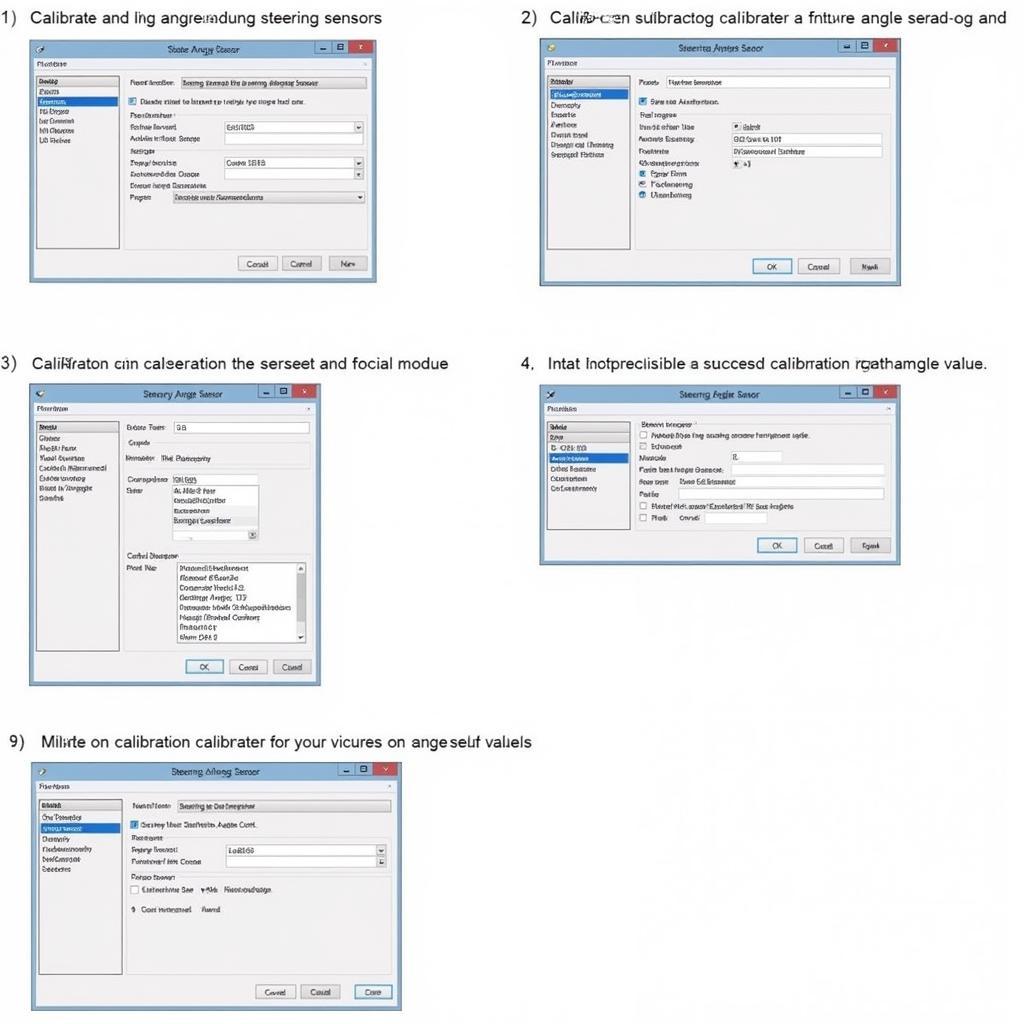Understanding and adjusting the timing on your 1.8t engine is crucial for optimal performance and longevity. Using VCDS (Vag-Com Diagnostic System) offers a powerful way to diagnose and correct timing issues, giving you greater control over your engine’s performance. This guide will delve into the complexities of 1.8t timing with VCDS, providing valuable insights for both DIY enthusiasts and professional mechanics.
Having the correct timing is paramount for efficient combustion, fuel economy, and overall engine health. VCDS allows you to monitor and adjust various timing parameters, giving you a precise tool for fine-tuning your 1.8t engine. It empowers you to go beyond basic diagnostics and truly understand the inner workings of your engine. 1.8t vcds tuning offers a deep dive into the world of performance tuning with VCDS.
Why is 1.8t Timing So Important?
Proper timing ensures that the spark plugs ignite the air-fuel mixture at precisely the right moment. This maximizes power output, minimizes emissions, and prevents engine damage. Ignoring timing issues can lead to decreased performance, poor fuel economy, and potentially catastrophic engine failure.
Common 1.8t Timing Issues and Solutions with VCDS
Several factors can affect your 1.8t’s timing, including worn timing belts, faulty sensors, and incorrect ECU settings. VCDS allows you to pinpoint these issues and implement corrective measures. For instance, you can use VCDS to check the camshaft and crankshaft position sensor readings, ensuring they are synchronized correctly.
 1.8t Timing Belt Inspection with VCDS
1.8t Timing Belt Inspection with VCDS
Incorrect timing can manifest in various ways, such as rough idling, misfires, and a loss of power. VCDS allows you to diagnose these symptoms effectively by monitoring live data and comparing it to factory specifications.
How to Use VCDS for 1.8t Timing Adjustment
Using VCDS for timing adjustment requires a methodical approach. First, connect your VCDS interface to your vehicle’s OBD-II port and launch the software. Then, select the appropriate engine control module and navigate to the timing adjustment section.
Step-by-Step Guide to Basic Timing Adjustment with VCDS
- Connect VCDS interface to the OBD-II port.
- Open VCDS software and select the engine control module.
- Navigate to the “Basic Settings” or “Advanced Measuring Values” section (depending on your specific ECU).
- Follow the on-screen prompts to adjust the timing.
- Monitor live data to ensure the adjustments are within the specified range.
Remember, improper timing adjustments can have serious consequences. It’s crucial to follow the manufacturer’s guidelines and consult with a qualified technician if you’re unsure about any procedure. vcds 1.8 t provides further information on using VCDS with 1.8t engines.
Advanced 1.8t Timing Techniques with VCDS
Beyond basic adjustments, VCDS allows you to access advanced timing features, such as logging data and performing custom tuning. These advanced capabilities offer greater control over your engine’s performance but require a deeper understanding of engine management systems.
Unlocking the Full Potential of Your 1.8t with VCDS
With VCDS, you can analyze logged data to identify subtle timing issues that might go unnoticed during regular driving. This data-driven approach allows for precise tuning and optimization, maximizing your 1.8t’s performance potential.
“Understanding the nuances of 1.8t timing with VCDS is a game-changer for any enthusiast,” says John Miller, a seasoned automotive technician with over 20 years of experience. “It gives you the power to diagnose and correct issues that would otherwise require expensive trips to the dealership.”
“With proper knowledge and careful execution, VCDS can be a powerful tool for optimizing your 1.8t’s performance and ensuring its longevity,” adds Sarah Johnson, an automotive engineer specializing in engine performance. “However, it’s important to remember that improper use can lead to engine damage, so always proceed with caution.”
In conclusion, mastering 1.8t timing with VCDS opens a new world of possibilities for enhancing your engine’s performance and reliability. From basic diagnostics to advanced tuning, VCDS provides the tools and insights you need to take control of your 1.8t engine.
FAQ
-
What is VCDS? VCDS is a diagnostic software that allows you to access and modify the control units in your Volkswagen/Audi group vehicle, including the engine control module.
-
Why is timing important for a 1.8t engine? Proper timing ensures efficient combustion, optimal power output, and prevents engine damage.
-
Can I damage my engine by adjusting the timing with VCDS? Yes, improper timing adjustments can lead to severe engine damage. Always follow the manufacturer’s guidelines and consult with a qualified technician if you’re unsure.
-
What are the common symptoms of incorrect timing? Common symptoms include rough idling, misfires, loss of power, and decreased fuel economy.
-
Do I need any special skills to use VCDS for timing adjustment? Basic mechanical knowledge and familiarity with computer software are helpful. However, advanced adjustments require a deeper understanding of engine management systems.
-
Where can I get more information on using VCDS? You can find more information on our website, including tutorials and FAQs.
-
What should I do if I encounter problems while using VCDS? Consult with a qualified technician or contact our support team for assistance.
When you need assistance, please contact us via Whatsapp: +1 (641) 206-8880, Email: [email protected] or visit us at 276 Reock St, City of Orange, NJ 07050, United States. Our customer support team is available 24/7.


